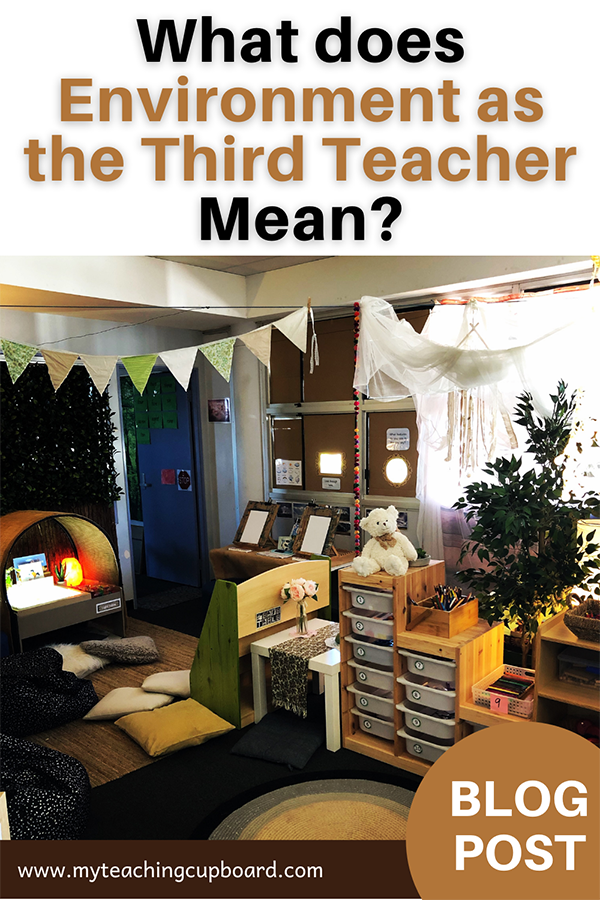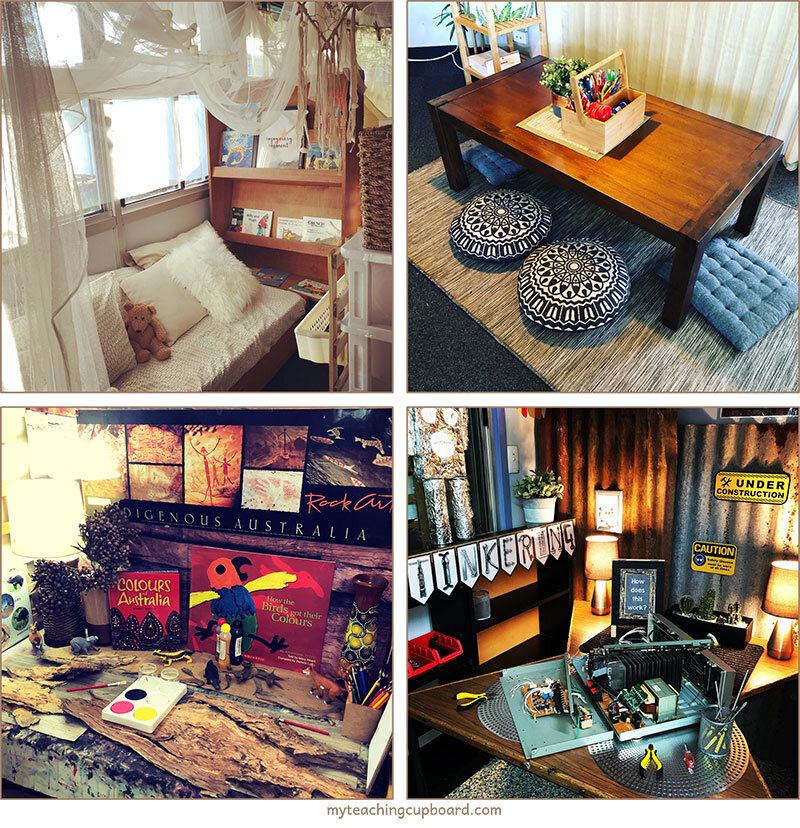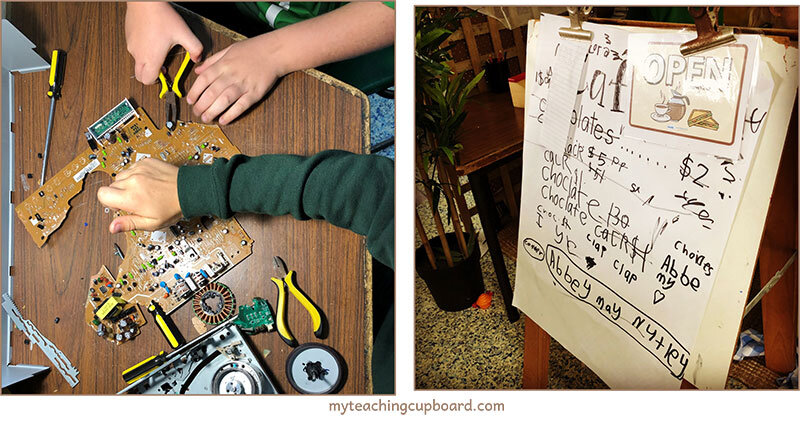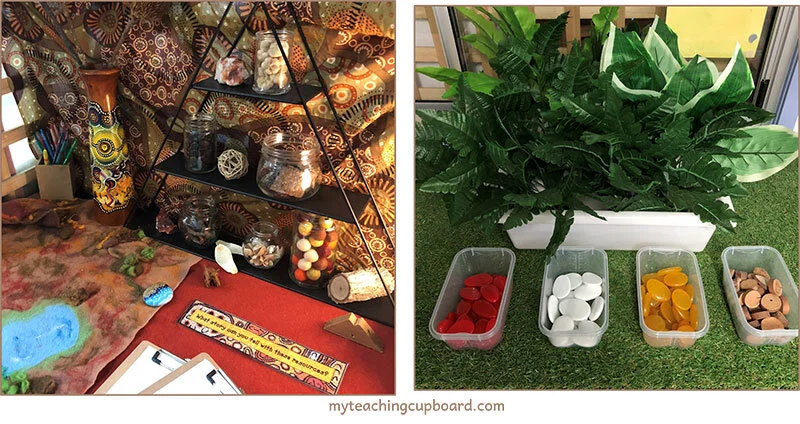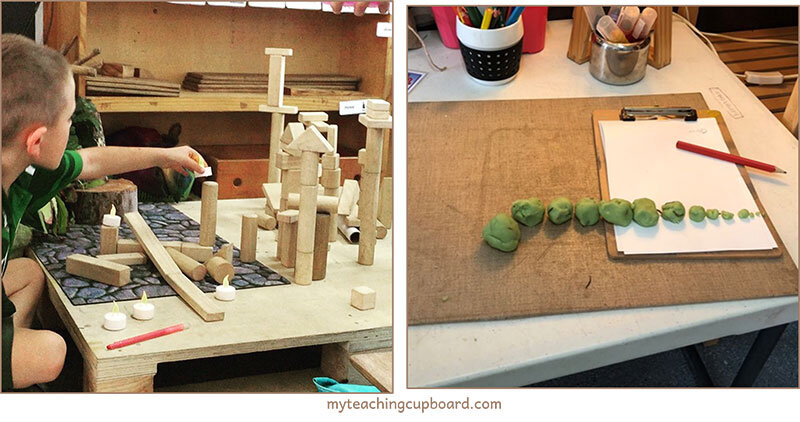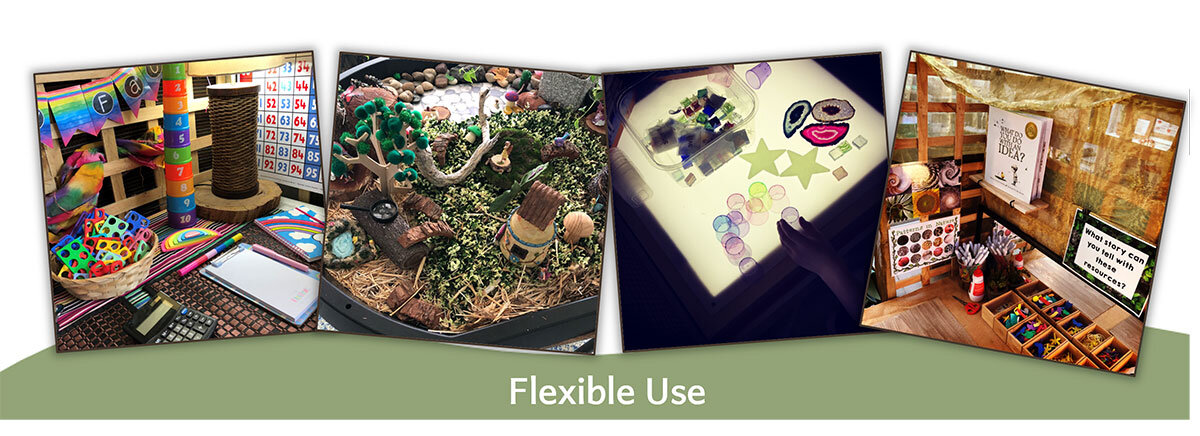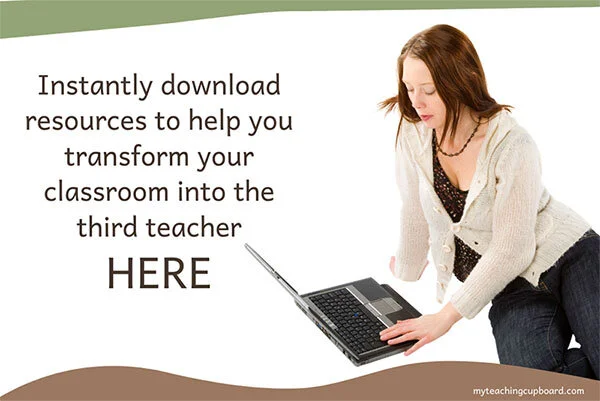Environment as the Third Teacher
Have you ever heard that the classroom environment is the third teacher? This concept is part of the world acclaimed Reggio Emilia Approach. This blog post will help you learn more about this concept and give you some ideas for making your classroom learning environment the third teacher.
What does Environment as the Third Teacher Mean?
“ There are three teachers of children: adults, other children, and their physical environment.”
Loris Malaguzzi was the leading force in the creation and development of the Reggio Emilia Approach. His child-centered, early childhood educational philosophy is where the desire to create an environment which acts as a third teacher was born. Loris Malaguzzi insisted the environment is a teacher – the third teacher.
To set up your third teacher you need to design your Reggio inspired environment with purpose and intent. When you intentionally and purposefully design the learning environment, you will have a good chance to get that third teacher working for you.
To create a Reggio inspired environment, the Reggio philosophy suggests that you must first consider creating sustainable environments which encourage your children to be partners and collaborators in their education.
Sustainable Environments
Creating a sustainable classroom environment will require you to consciously think about the resources you source for your classroom. Are the learning resources you use sustainable? Consider not only your traditional hands-on learning resources like manipulatives and loose parts, but also the ones you supply for the children to record and represent their ideas.
If you consciously choose to offer sustainable and culturally appropriate resources, you will have the chance to support your children’s understanding of the environment, promote sustainable practices and develop their responsibilities as global citizens.
Children as Partners and Collaborators
You can create opportunities for collaboration in your learning environment when you consider the ways you offer the learning materials and equipment. Your goal is to create a classroom environment which encourages communication and builds strong relationships and a healthy classroom community.
This is important to the Reggio philosophy because they believe that when you give children the opportunity to be active participants in their learning environment, the children will in turn develop the creative and critical thinking skills needed for lifelong learning. They will have the skills they need to be successful community members.
Why is the environment considered a third teacher?
In your classroom you will see just how the environment can be the third teacher as you observe your children creating new knowledge together. This happens whenever children have the opportunity to collaborate and interact with their environment.
You will notice your children challenging themselves and each other. They will also be experimenting, problem solving and extending their thinking. They will be taught by their experiences with the learning resources you provide and by the interactions within that environment.
Environments that encourage collaboration and investigation:
invite conversations by offering a varied selection of materials that children can use to investigate, hypothesise, and explore.
use children’s interest as a springboard for developing investigation areas that are responsive to the learning happening naturally in their play.
An environment where children are encouraged to collaborate and investigate together will not only provide rich learning opportunities, but it will also free up your time and give you plenty of opportunities to interact with all the children in your class on a personal level.
Many teachers practising the Reggio philosophy notice that they develop a deeper awareness and understanding of how young children learn. They really get to know their students well. This deeper awareness happens because you learn to be an observer of the children’s explorations, and in turn, become more responsive to your children’s questions and thinking.
Characteristics of the Reggio Classroom Environment
Natural materials and things of interest for the children to see, touch and smell.
Resources which give children the opportunity to explore and problem solve as they develop their creative and critical thinking skills.
Investigation spaces offering learning provocations in art and collage areas, writing and reading spaces, makerspaces, blocks and construction zones, tinkering tables, dramatic play areas and science or nature tables.
Learning opportunities to foster shared thinking, exploration, experimentation and hypothesising.
The learning resources are open-ended in nature and the children should have easy access to the resources and equipment.
In order to promote an awareness of sustainable practices which develop their respect for the environment and the thoughtful use of our limited natural resources.
As discussed earlier, the Reggio philosophy encourages children to be active contributors. Reggio children are expected and encouraged to have an influence in the classroom and in their world. They are expected to contribute by making the environment a safe and beautiful place, for example, the children are expected to be using equipment and resources in an appropriate way.
Most Reggio educators provide labelled and organised resources which are easily accessible to the children. The learning resources are set up at an investigation area where the children can easily see and use all the materials. They are often accompanied with printed provocation questions to encourage the exploration of specific learning intentions. The Reggio inspired curriculum encourages a sense of wonder and excitement about the materials and the related curriculum.
Loose parts and natural materials are seen as necessities if you would like to use the environment as your third teacher. Open-ended learning resources form the base of a learning provocation and are common in Reggio classrooms.
If you use natural resources endemic to your location, you will also be developing a connection to place and the local community. The use of natural resources and giving the children opportunities to engage with nature will help your children to develop a respect for the natural world and become more environmentally responsible but it is not the only aspect of Reggio inspired environments and practices.
Reggio inspired practices include
connectedness (culture, community, and the environment)
an emergent, inquiry-based curriculum
the 100 languages of children
There is a myth that if you offer children all natural resources and design an aesthetically pleasing environment rich in natural materials like wood, plants, cotton and muslin or hessian, you are implementing a Reggio inspired pedagogy. This is NOT how you implement the Reggio philosophy.
Reggio inspired provocations are not like your traditional classroom centres or stations. Traditional learning centres are usually outcome orientated and focus on a teacher designed task. Because they usually require a specific outcome, the emphasis is often on the finished product and not the process. In the Reggio Emilia way of teaching, where the environment is the third teacher, the process is much more important than the finished product.
Reggio provocations are the backbone of the Reggio environment and allow the third teacher to come alive. The learning provocations are intended to invite students to engage with the materials and to provoke their thinking.
Carefully designed learning provocations are offered to Reggio children to draw them in and engage them with the materials and ideas. A learning provocation is thoughtfully curated and beautifully presented by the Reggio educator. It should be an invitation to explore, investigate, learn, represent, and create.
You can learn more about what a learning provocation is HERE and 3 steps to setting up a learning provocation HERE.
The Reggio Emilia classrooms are often filled with natural light and have ordered and organised resources which provoke awe and wonder. The children are invited to investigate and represent their learning through a range of mediums – through their 100 languages.
Adopting the Reggio Emilia Philosophy in Australia
In Australian schools, you would see similar invitations in our play-based pedagogy or inquiry models where open exploration and investigation is the intent. You might like to learn more about
Your Reggio inspired classroom will need to meet the following conditions if you want to ensure you have the third teacher working for you and that your learning provocations are effective and honour those offered in the schools of Reggio Emilia.
An inquiry-based classroom where wonder and curiosity has been nurtured and valued.
An understanding of what it means to be a learner.
Respect and appreciation of the environment and the resources and people within it.
The ability of the children to engage independently with the resources and be able to share and collaborate.
The ability of the children to listen to each other and to build on each other’s thinking.
The educators must have a strong understanding of the ACARA early childhood curriculum.
For us, the environment as the third teacher is certainly a part of the Reggio Emilia Approach we could achieve. To have your environment working for you as it does in Reggio Emilia, you would need to take your local culture and community into consideration when designing your learning environment. The Reggio philosophy has their local place at its core.
As the Reggio curriculum is very much an emergent and inclusive practice with child led projects and investigations, you should have a strong sense of belonging in your classroom community. Your classroom resources, equipment and décor should reflect the lives of your children and their families.
Are you looking for learning resources and printables to help you transform your classroom into the third teacher? You might be interested in downloading some of the beautiful resources I have HERE.
You might like to also download this free article from the Australian Children’s Education and Care Quality Authority: The Environment as the ‘Third Teacher.pdf” to learn even more about adopting the Reggio Emilia Approach in your play based classroom.
“The environment should act as an aquarium which reflects the ideas, ethics, attitudes and culture of the people who live in it. This is what we are working towards. ”
If you like this blog post on the Environment as the Third Teacher, please consider sharing it...
Just CLICK the sharing box below.👇

